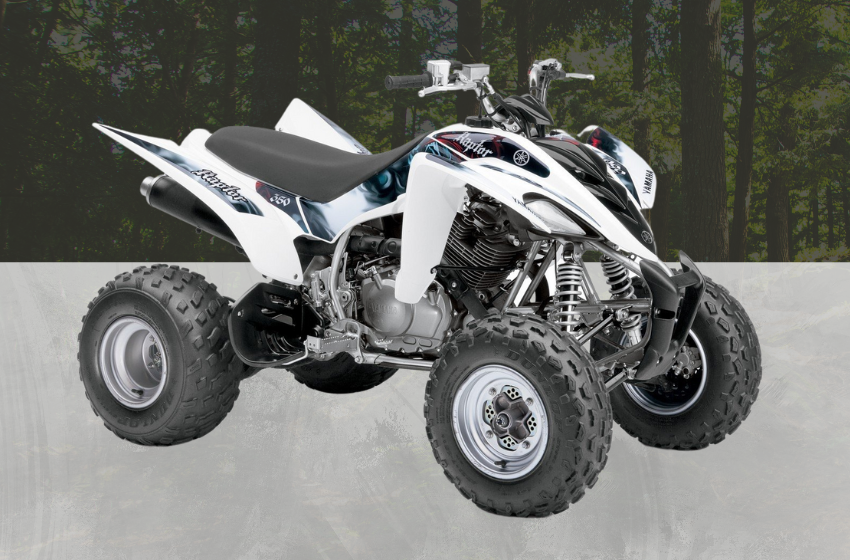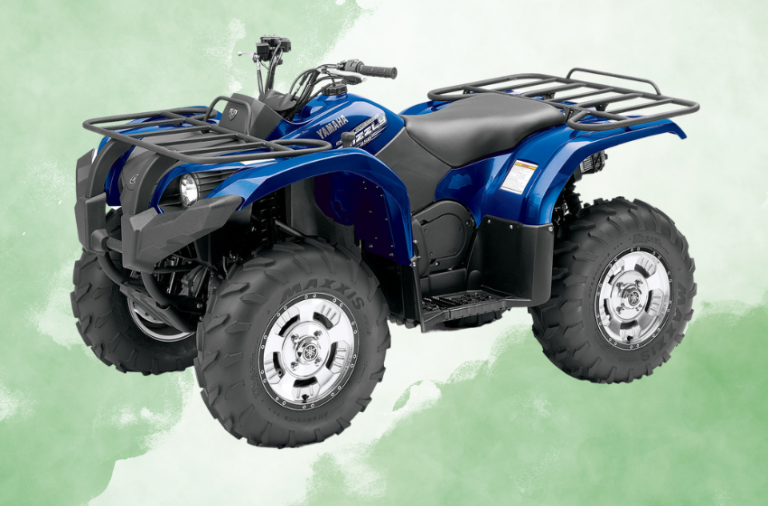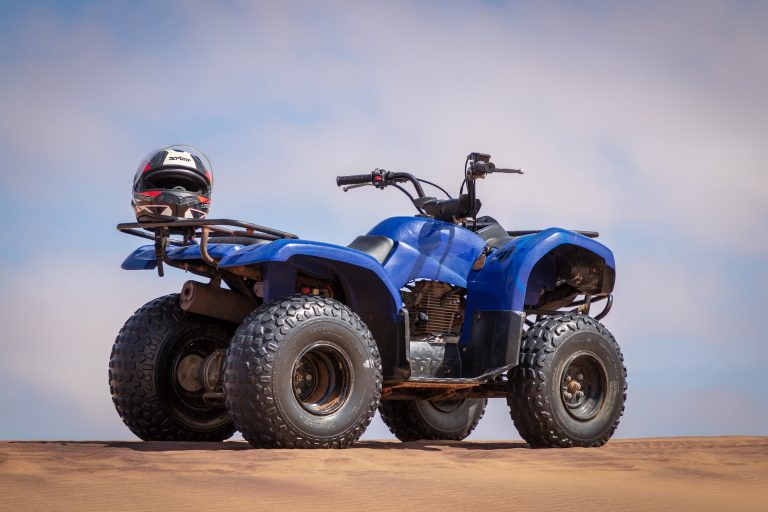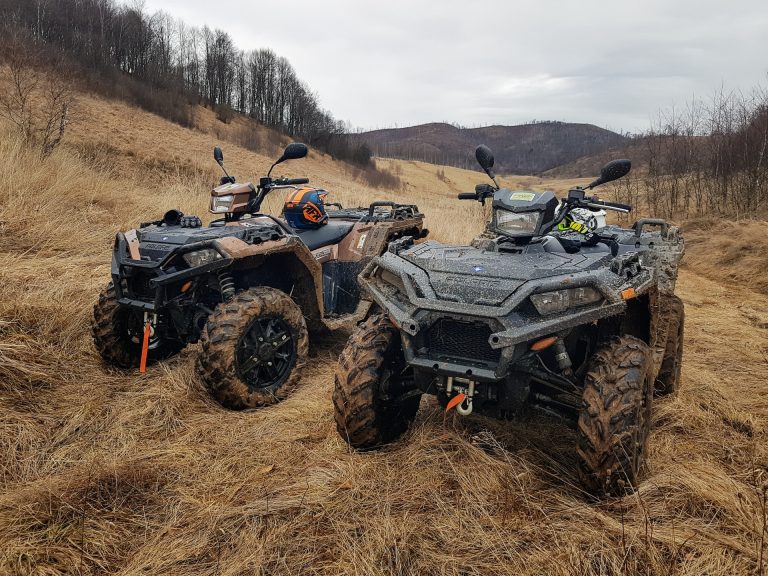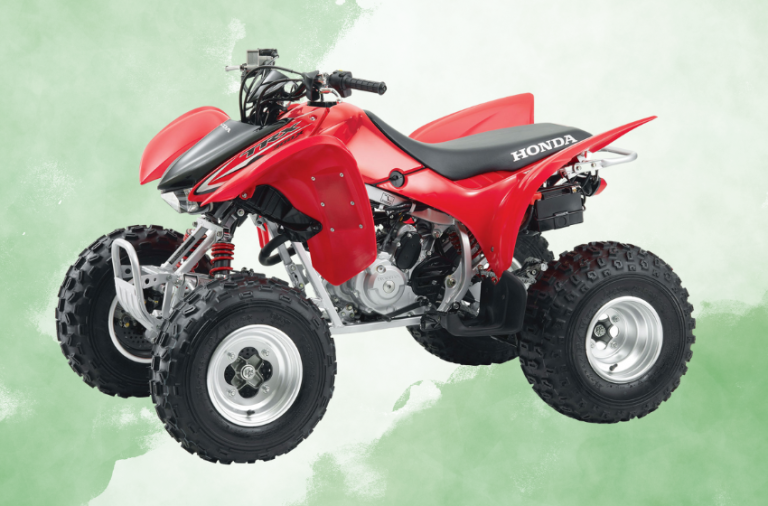Yamaha Raptor 350: Top Speed & Specs
Whether you’ve been a fan since 04’ or are just looking into getting one now, the Yamaha Raptor 350 has plenty to offer.
With a top speed of around 63 mph (on flat surfaces), the Yamaha Raptor 350’s 348cc engine and six speed transmission paired with its light, 396-pound wet weight boosts performance and handling and makes all-day rides even more enjoyable.
Table of Contents
- Yamaha Raptor 350 Key Specifications
- The Yamaha Raptor 350 Has Been Around
- Yamaha Raptor 350 Key Features
- The Yamaha Raptor 350 In Action
- The Yamaha Raptor 350 Cost
- Yamaha Raptor 350 Detailed Specifications
- Yamaha Raptor 350 Drivetrain And Ignition
- Yamaha Raptor 350 Tires And Brakes
- Yamaha Raptor 350 Suspension And Dimensions
- Yamaha Raptor 350 Exterior
- Conclusion
Yamaha Raptor 350 Key Specifications
| Engine Type | 348cc air-cooled 4-stroke; SOHC, 2 valves |
|---|---|
| Bore x Stroke | 83.0mm x 64.5mm |
| Compression Ratio | 9.2:1 |
| Fuel Delivery | Mikuni® 36mm BSR |
| Ignition | DC – CDI |
| Starting System | Electric |
| Transmission | 6-speed w/reverse; wet multiplate clutch |
| Drive Train | 2WD; sealed O-ring chain |
The Yamaha Raptor 350 Has Been Around
Originally dropping in 2004, this mid-bore quad came out the gates as a strong competitor in the market for top speed and handling. From 2004 until 2013, Yamaha produced the sport and leisure ATV known as the Raptor 350. It had excellent handling, low to mid-range power, and racy looks. This four-wheeler was made to be enjoyable to ride and ideal for off-road tracks.
During its lifespan, This sporty 4×4 remained unrivaled in terms of performance and design. The Raptor 350 had a fruitful 10-year production run until being discontinued when the Raptor 250 gained popularity.
The Yamaha Raptor 350’s design draws inspiration from two legendary vehicles, the 2001 660R Raptor and the 2004 YFZ450. It resembles big-bore four-wheelers, which predominated the ATV market a few decades ago, but in a smaller, more manageable size.
The low-lying seat provides comfortable sport riding ergonomics while allowing riders to still enjoy operating a powerful ATV. To ensure a secure grip and the comfort of the rider, extra wide, 45mm footpegs were directly taken from the YFZ450.
Yamaha Raptor 350 Key Features
- A powerful and super-durable air-cooled SOHC four-stroke single, puts out a wide, deep powerband and starts with the push of a button.
- With a rugged and smooth-shifting wide-ratio six speed transmission, keeping that powerful engine purring is nearly effortless, whatever the terrain.
- Reverse gear is just the thing for getting yourself out of tight spots.
- Light, 396-pound wet weight boosts performance and handling and makes all-day rides even more enjoyable.
- Big Raptor style and Raptor-inspired seat mean maximum rider comfort and movement with excellent sport-riding ergonomics
- Dual 30-watt multi reflector Krypton headlights straight off the potent YFZ450 add the perfect menacing appearance. Tail Light has an incorporated brake light for added convenience.
- Easy-access grease fittings on all chassis lubrication points simplify maintenance and help extend the life of the Raptor 350.
- The 2.4-gallon fuel tank means less filling up and longer, more enjoyable rides.
The Yamaha Raptor 350 In Action
Raptor owners adore the vehicle’s braking technology, which provides dependable stopping ability on a variety of road conditions. Through a handy shift lever, the quad can also shift into reverse from any gear.
Because of the engine’s high snorkel-type intake, airflow is never constrained or insufficient. Rear-wheel travel from piggyback reservoir shocks with five-way adjustable preload is respectable, resulting in consistent performance during challenging sport riding.
Other appealing characteristics include a handlebar-mounted choke lever that is simple to use, a six-speed transmission, an upgrade-friendly SOHC architecture, and low-profile tires with lots of traction. The Raptor was also among the first vehicles to include white plastics, which made it the ideal canvas for adding graphics and decal kits to make the quad uniquely yours.
The Yamaha Raptor 350 Cost
The Raptor’s base model can cost between $4,999 and $5,599, depending on the model year, trim, and package options. The retail price of your chosen model would increase by at least $700 if you included a full complement of extras, such as GYTR aluminum engine/front A-arm/swingarm skid plates, front grasp bars, antennas, hour meters, tachometers, etc.
The model years of the auction postings are typically from 2004 to 2007. Their prices range from $1,700 to $5,460. The majority of the items up for bid are either modified or nearly mint.
Models from 2008 and recent years, which normally cost $2,500 to $4,000, are seldom ever seen on auction and trading websites. Regardless of the year of construction, the white and gray trim appears to retain its worth well.
Yamaha Raptor 350 Detailed Specifications
The Yamaha Raptor 350’s top speed is roughly 63 mph (on flat surfaces). Due to the impact of weather, rider weight, vehicle condition, modifications, and a number of other factors, it is expected that this number may vary. However, some Raptor owners assert that with only little modifications and a 14T front sprocket, they can easily reach 70 mph/113 kph.
The Raptor 350 uses a four-stroke, air-cooled, single-cylinder SOHC engine. Its forward-inclined power mill has a bore-stroke ratio of 83 by 64.5 mm (3.27 × 2.54 inches). It has an engine displacement of 349 cm3, a compression ratio of 9.20:1, and a wet-sump lubrication system. A 36-mm Mikuni BSR36 carburetor and a wet-type air filtration system handle the air-fuel mixture.
The Yamaha Raptor 350 has a maximum power output of 16.4 kW (22.3PS). 2.38 US gal/9 liters of unleaded gasoline with a pump Octane number of 87+ and a research Octane number of 91+ is enough to fill the vehicle’s tank.
The Raptor’s oil capacity at draining is 2.64 US quarts/2.5 liters. At disassembly, it is 3.38 US quarts/3.2 liters. And at oil filter change, the capacity is 2.75 US quarts/2.6 liters. Depending on ambient temperature, you may use SAE 5W-30, 10W-30, or 20W-40 Yamalube 4 4-stroke oil or equivalent with an API grade of at least SJ to prevent clutch slippage.
Yamaha Raptor 350 Drivetrain And Ignition
- The wheels are propelled by a wet, centrifugal automatic clutch system and a six-speed constant-mesh shaft drive. Its primary spur gear has a 76/24 reduction ratio (3.167). 36/16 (2.685) is the first gear ratio, and 23/29 is the sixth (0.946). A 10.2-foot turning radius makes handling easier.
- The DC-CDI ignition used by the Raptor 350 has an electric start system and an additional mechanical recoil backup. Electronic accessories are powered by an AC-magneto generator system made by Mitsubishi and F4T466.
- In addition to a 15-Amp main fuse, it needs a 12V, 8.6 Ah, 190-CCA (Cold Cranking Amps) YTZ10S battery with assembled dimensions of 6.00 x 3.44 x 3.69 inches (150 x 87 x 93 mm). For all models made available in the United States, Europe, Canada, and Oceania, an NGKDR8EA with a 0.6–0.7 mm (0.024–0.028 in) gap is necessary.
Yamaha Raptor 350 Tires And Brakes
- Aluminum panel wheels are mounted with tubeless Dunlop KT851B AT21 7-10 front tires and KT877A AT20 10-9 rear tires. Tire pressure for the front and rear should be 25 kPa (0.25 kgf/cm2, 3.6 psi). When inflating tires, do not exceed the range of 3.2 psi/22 kPa (0.22 kgf/cm2) to 4.1 psi/28 kPa (0.28 kgf/cm2).
- When placing the tire beads, the maximum pressure should be 36 psi/250 kPa (2.5 kgf/cm2). When the rear tires are worn out, swap them out for ITP Holeshot XCR 6 Ply ATV Tires.
- The Yamaha Raptor 350’s engine brakes consist of a dual hydraulic disc brake operated with the right hand and a single hydraulic disc brake activated with the right foot.
Yamaha Raptor 350 Suspension And Dimensions
- A double-wishbone front suspension with coil spring shocks and a swingarm link rear suspension with coil spring/gas shocks are both integrated into the vehicle’s steel chassis. Wheel travel for the front and rear is 200 mm (7.87 inches) and 210 mm (8.27 inches), respectively.
- The size is 69.7 x 43.1 x 42.5 inches overall (1,770 x 1,095 x 1,080 mm – L x W x H). The vehicle’s wheelbase is 47.6 inches, and the minimal ground clearance is 4.53 inches (115 mm) (1,210 mm). 180 Kg/397 pounds is the curb weight. The seat height is 32.3/820 millimeters.
Yamaha Raptor 350 Exterior
- The Raptor 350 has a plastic shell and a steel tube frame (with a 6° caster angle and 26-mm tail). Hand grips, 45-mm footpegs, and front and rear fenders are included as standard equipment.
- It has two 21-watt tail/brake lights, two 30-watt headlights mounted on the front fenders, and two 1.7-watt indicator lights. For better visibility while wheeling at night, convert these to LED lights.
Conclusion
The Yamaha Raptor 350 is a fan favorite when it comes to 4×4 vehicles for both riding on the roads, and off of them. Fitted with a more than capable engine and a solid build, they were the talk of the ATV community when they were released. Though they are no longer in production, if you are interested in checking out one of these bad boys you can certainly find them in used condition for a reasonable price. Even after all these years, the impact the Yamaha Raptor 350 had on the market can still be felt.

